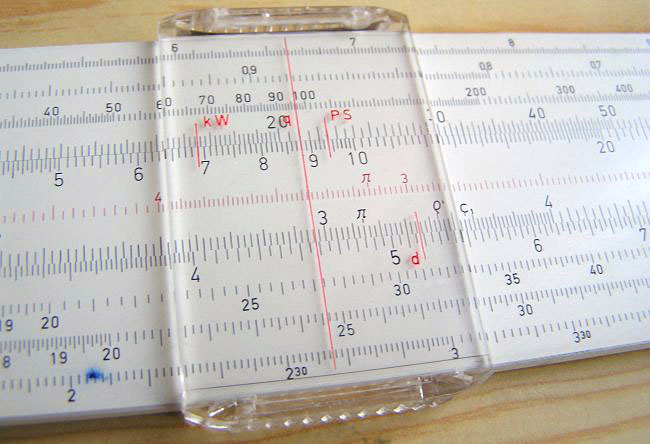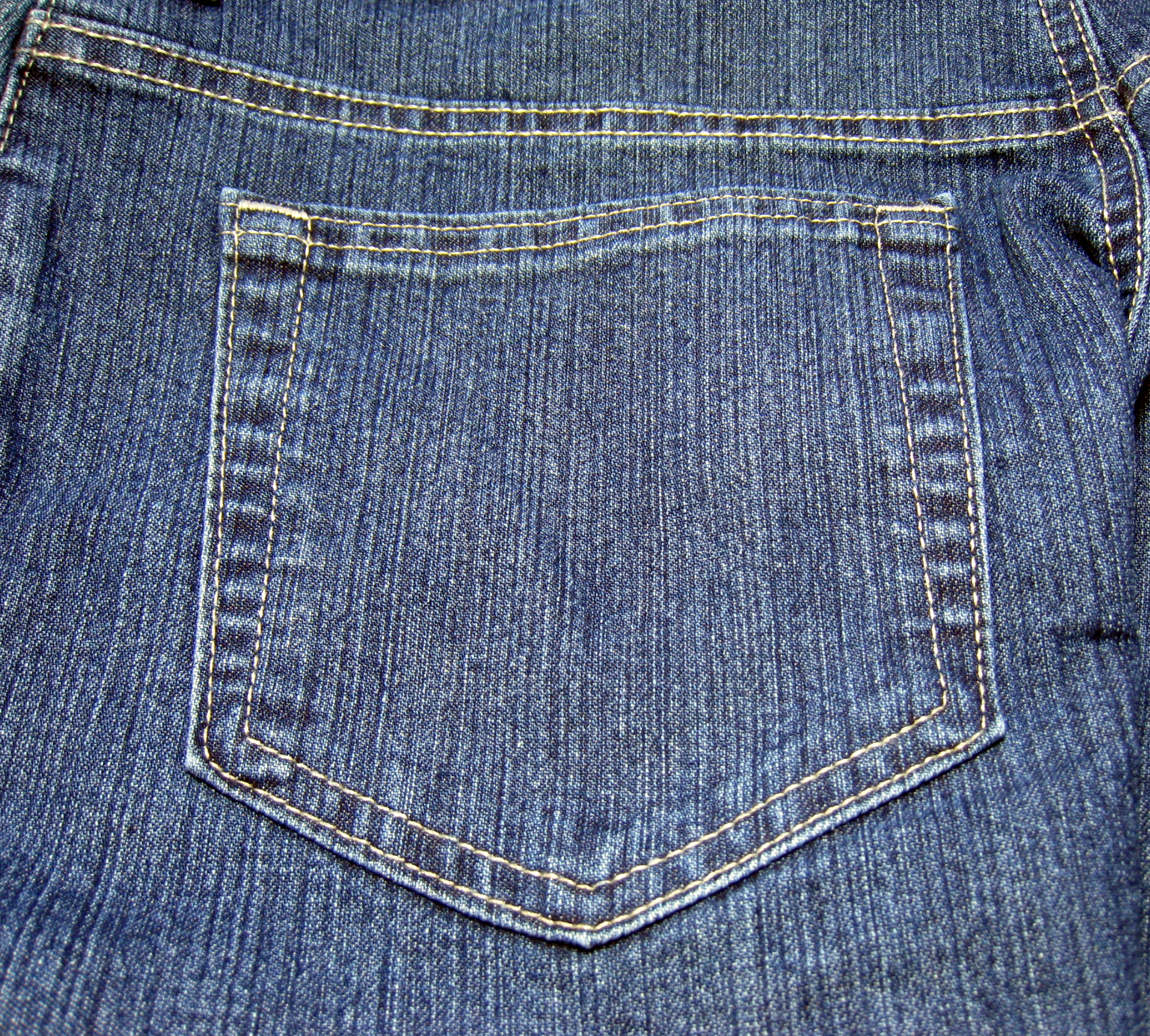|
Slide Rule
The slide rule is a mechanical analog computer which is used primarily for multiplication and division, and for functions such as exponents, roots, logarithms, and trigonometry. It is not typically designed for addition or subtraction, which is usually performed using other methods. Maximum accuracy for standard linear slide rules is about three decimal significant digits, while scientific notation is used to keep track of the order of magnitude of results. Slide rules exist in a diverse range of styles and generally appear in a linear, circular or cylindrical form, with slide rule scales inscribed with standardized graduated markings. Slide rules manufactured for specialized fields such as aviation or finance typically feature additional scales that aid in specialized calculations particular to those fields. The slide rule is closely related to nomograms used for application-specific computations. Though similar in name and appearance to a standard ruler, the slide rule is ... [...More Info...] [...Related Items...] OR: [Wikipedia] [Google] [Baidu] |
William Oughtred
William Oughtred ( ; 5 March 1574 – 30 June 1660), also Owtred, Uhtred, etc., was an Kingdom of England, English mathematician and Anglican ministry, Anglican clergyman.'Oughtred (William)', in P. Bayle, translated and revised by J.P. Bernard, T. Birch and J. Lockman, ''A General Dictionary, Historical and Critical'', (James Bettenham, for G. Strachan and J. Clarke, London 1734/1739), Vol. VIIIpp. 77-86(Google). After John Napier invented logarithms and Edmund Gunter created the logarithmic scales (lines, or rules) upon which slide rules are based, Oughtred was the first to use two such scales sliding by one another to perform direct multiplication and division (mathematics), division. He is credited with inventing the Slide rule scale, slide rule in about 1622. He also introduced the "×" multiplication sign, symbol for multiplication and the abbreviations "sin" and "cos" for the sine and cosine functions. Clerical life Education The son of Benjamin Oughtred of Eton, Berkshi ... [...More Info...] [...Related Items...] OR: [Wikipedia] [Google] [Baidu] |
Sliderule
The slide rule is a mechanical analog computer An analog computer or analogue computer is a type of computer that uses the continuous variation aspect of physical phenomena such as electrical, mechanical, or hydraulic quantities (''analog signals'') to model the problem being solved. In ... which is used primarily for multiplication and division (mathematics), division, and for functions such as exponents, Nth root, roots, logarithms, and trigonometry. It is not typically designed for addition or subtraction, which is usually performed using other methods. Maximum accuracy for standard linear slide rules is about three decimal significant digits, while scientific notation is used to keep track of the order of magnitude of results. Slide rules exist in a diverse range of styles and generally appear in a linear, circular or cylindrical form, with slide rule scales inscribed with standardized Graduation (instrument), graduated markings. Slide rules manufactured for speciali ... [...More Info...] [...Related Items...] OR: [Wikipedia] [Google] [Baidu] |
Engineering
Engineering is the use of scientific principles to design and build machines, structures, and other items, including bridges, tunnels, roads, vehicles, and buildings. The discipline of engineering encompasses a broad range of more specialized fields of engineering, each with a more specific emphasis on particular areas of applied mathematics, applied science, and types of application. See glossary of engineering. The term ''engineering'' is derived from the Latin ''ingenium'', meaning "cleverness" and ''ingeniare'', meaning "to contrive, devise". Definition The American Engineers' Council for Professional Development (ECPD, the predecessor of ABET) has defined "engineering" as: The creative application of scientific principles to design or develop structures, machines, apparatus, or manufacturing processes, or works utilizing them singly or in combination; or to construct or operate the same with full cognizance of their design; or to forecast their behavior under sp ... [...More Info...] [...Related Items...] OR: [Wikipedia] [Google] [Baidu] |
Slide Rule Example2 With Labels
Slide or Slides may refer to: Places *Slide, California, former name of Fortuna, California Arts, entertainment, and media Music Albums * ''Slide'' (Lisa Germano album), 1998 * ''Slide'' (George Clanton album), 2018 *''Slide'', by Patrick Gleeson, 2007 * ''Slide'' (Luna EP), 1993 * ''Slide'' (Madeline Merlo EP), 2022 Songs * "Slide" (The Big Dish song), 1986 * "Slide" (Goo Goo Dolls song), 1998 * "Slide" (Calvin Harris song), 2017 * "Slide" (French Montana song), 2019 * "Slide" (H.E.R. song), 2019 * "Slide" (Slave song), 1977 * "Step Back"/"Slide", by Superheist, 2001 *"Slide", by Dido from ''No Angel'' *"Slide", by Madeline Merlo from '' Slide'', 2022 *"The Slide", by Cowboy Junkies from '' One Soul Now'' Other uses in music * Slide (musical ornament), a musical embellishment found particularly in Baroque music * Slide (tune type), a tune type in Irish traditional music, common to the Sliabh Luachra area *Slide, a 1970s disco side project of Rod McKuen's *''The Slide'', a juke ... [...More Info...] [...Related Items...] OR: [Wikipedia] [Google] [Baidu] |
Pocket Slide Rule
A pocket is a bag- or envelope-like receptacle either fastened to or inserted in an article of clothing to hold small items. Pockets are also attached to luggage, backpacks, and similar items. In older usage, a pocket was a separate small bag or pouch. Origins Ancient people used leather or cloth pouches to hold valuables. Ötzi (also called the "Iceman"), who lived around 3,300 BCE, had a belt with a pouch sewn to it that contained a cache of useful items: a scraper, drill, flint flake, bone awl, and a dried tinder fungus. In European clothing, fitchets, resembling modern day pockets, appeared in the 13th century. Vertical slits were cut in the super tunic, which did not have any side openings, to allow access to purse or keys slung from the girdle of the tunic. According to historian Rebecca Unsworth, it was in the late 15th century that pockets became more noticeable. During the 16th century, pockets increased in popularity and prevalence. In slightly later European clot ... [...More Info...] [...Related Items...] OR: [Wikipedia] [Google] [Baidu] |
Cursor
Cursor may refer to: * Cursor (user interface), an indicator used to show the current position for user interaction on a computer monitor or other display device * Cursor (databases), a control structure that enables traversal over the records in a database * Cursor, a value that is the position of an object in some known data structure, a predecessor of pointers * Cursor (slide rule), indicates corresponding points on scales that are not adjacent to each other * Cursor Models, made for the Mercedes Benz Museum, and as promotional models * ''Cursor'' (magazine), an early magazine distributed on cassette from 1978 and into the early 1980s * ''Cursor'', a holographic sidekick character from the TV series ''Automan'' See also *Pointer (graphical user interfaces) In human–computer interaction, a cursor is an indicator used to show the current position on a computer monitor or other display device that will respond to input from a text input or pointing device. The mouse curso ... [...More Info...] [...Related Items...] OR: [Wikipedia] [Google] [Baidu] |
Slide Rule-homemade Teaching Base 2
Slide or Slides may refer to: Places *Slide, California, former name of Fortuna, California Arts, entertainment, and media Music Albums * ''Slide'' (Lisa Germano album), 1998 * ''Slide'' (George Clanton album), 2018 *''Slide'', by Patrick Gleeson, 2007 * ''Slide'' (Luna EP), 1993 * ''Slide'' (Madeline Merlo EP), 2022 Songs * "Slide" (The Big Dish song), 1986 * "Slide" (Goo Goo Dolls song), 1998 * "Slide" (Calvin Harris song), 2017 * "Slide" (French Montana song), 2019 * "Slide" (H.E.R. song), 2019 * "Slide" (Slave song), 1977 * "Step Back"/"Slide", by Superheist, 2001 *"Slide", by Dido from ''No Angel'' *"Slide", by Madeline Merlo from '' Slide'', 2022 *"The Slide", by Cowboy Junkies from '' One Soul Now'' Other uses in music * Slide (musical ornament), a musical embellishment found particularly in Baroque music * Slide (tune type), a tune type in Irish traditional music, common to the Sliabh Luachra area *Slide, a 1970s disco side project of Rod McKuen's *''The Slide'', a juke ... [...More Info...] [...Related Items...] OR: [Wikipedia] [Google] [Baidu] |
Scientific Notation
Scientific notation is a way of expressing numbers that are too large or too small (usually would result in a long string of digits) to be conveniently written in decimal form. It may be referred to as scientific form or standard index form, or standard form in the United Kingdom. This base ten notation is commonly used by scientists, mathematicians, and engineers, in part because it can simplify certain arithmetic operations. On scientific calculators it is usually known as "SCI" display mode. In scientific notation, nonzero numbers are written in the form or ''m'' times ten raised to the power of ''n'', where ''n'' is an integer, and the coefficient ''m'' is a nonzero real number (usually between 1 and 10 in absolute value, and nearly always written as a terminating decimal). The integer ''n'' is called the exponent and the real number ''m'' is called the '' significand'' or ''mantissa''. The term "mantissa" can be ambiguous where logarithms are involved, because it is ... [...More Info...] [...Related Items...] OR: [Wikipedia] [Google] [Baidu] |
Quotient
In arithmetic, a quotient (from lat, quotiens 'how many times', pronounced ) is a quantity produced by the division of two numbers. The quotient has widespread use throughout mathematics, and is commonly referred to as the integer part of a division (in the case of Euclidean division), or as a fraction or a ratio (in the case of proper division). For example, when dividing 20 (the ''dividend'') by 3 (the ''divisor''), the ''quotient'' is "6 with a remainder of 2" in the Euclidean division sense, and 6\tfrac in the proper division sense. In the second sense, a quotient is simply the ratio of a dividend to its divisor. Notation The quotient is most frequently encountered as two numbers, or two variables, divided by a horizontal line. The words "dividend" and "divisor" refer to each individual part, while the word "quotient" refers to the whole. \dfrac \quad \begin & \leftarrow \text \\ & \leftarrow \text \end \Biggr \} \leftarrow \text Integer part definition The q ... [...More Info...] [...Related Items...] OR: [Wikipedia] [Google] [Baidu] |
Product (mathematics)
In mathematics, a product is the result of multiplication, or an expression that identifies objects (numbers or variables) to be multiplied, called ''factors''. For example, 30 is the product of 6 and 5 (the result of multiplication), and x\cdot (2+x) is the product of x and (2+x) (indicating that the two factors should be multiplied together). The order in which real or complex numbers are multiplied has no bearing on the product; this is known as the '' commutative law'' of multiplication. When matrices or members of various other associative algebras are multiplied, the product usually depends on the order of the factors. Matrix multiplication, for example, is non-commutative, and so is multiplication in other algebras in general as well. There are many different kinds of products in mathematics: besides being able to multiply just numbers, polynomials or matrices, one can also define products on many different algebraic structures. Product of two numbers Product o ... [...More Info...] [...Related Items...] OR: [Wikipedia] [Google] [Baidu] |
Slide Rule Scale
A slide rule scale is a line with graduated markings inscribed along the length of a slide rule used for mathematical calculations. The earliest such device had a single logarithmic scale for performing multiplication and division but soon an improved technique was developed which involved two such scales sliding alongside each other – hence the name slide rule (colloquially called a slipstick in the United States). Later, multiple scales were provided with the most basic being logarithmic but with others graduated according to the mathematical function required. Few slide rules have been designed for addition and subtraction, rather the main scales are used for multiplication and division and the other scales are for mathematical calculations involving trigonometric, exponential and, generally, transcendental functions. Before they were superseded by electronic calculators in the 1970s slide rules were an important type of portable calculating instrument. Slide rule des ... [...More Info...] [...Related Items...] OR: [Wikipedia] [Google] [Baidu] |
Trigonometric Function
In mathematics, the trigonometric functions (also called circular functions, angle functions or goniometric functions) are real functions which relate an angle of a right-angled triangle to ratios of two side lengths. They are widely used in all sciences that are related to geometry, such as navigation, solid mechanics, celestial mechanics, geodesy, and many others. They are among the simplest periodic functions, and as such are also widely used for studying periodic phenomena through Fourier analysis. The trigonometric functions most widely used in modern mathematics are the sine, the cosine, and the tangent. Their reciprocals are respectively the cosecant, the secant, and the cotangent, which are less used. Each of these six trigonometric functions has a corresponding inverse function, and an analog among the hyperbolic functions. The oldest definitions of trigonometric functions, related to right-angle triangles, define them only for acute angles. To extend the sine ... [...More Info...] [...Related Items...] OR: [Wikipedia] [Google] [Baidu] |





.jpg)